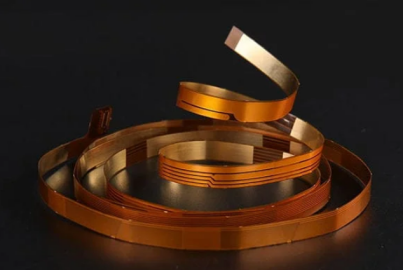Engineering Challenges and Innovative Practices of Ultra-Long FPC Materials
Author: Jack Wang
With the growing adoption of wearable medical devices and new energy vehicle BMS systems, demand for ultra-long FPCs (exceeding 1.2 meters in length) has surged. This article provides an in-depth analysis of the critical performance metrics for ultra-long FPC materials and offers engineering guidelines based on real-world test data.
I. Breaking Physical Limits of Ultra-Long FPC Materials
1.Substrate Selection Criteria
Polyimide (PI) films, as the core substrate for ultra-long FPCs, must meet:
①Thickness tolerance: ±1 μm precision for 12 μm-grade materials (DuPont Kapton test data)
②CTE (XY-axis): ≤15 ppm/°C (IPC-TM-650 standard)
③Tensile strength: ≥350 MPa (ASTM D882 test results)
2.Copper Foil Optimization
For conductive layer design in ultra-long FPCs:
①Rolled copper foil is preferred, offering 30% higher elongation than electrolytic copper (Nippon Mining NT-VLP data)
②Gradual trace width design: ΔW = 0.02% × L (where L = trace length)
③Signal integrity control: For lengths >0.8 m, impedance tolerance should be ≤±5%
II. Critical Process Control Points
1.Lamination Process Innovation
Adopt graded pressure lamination:
①Pre-press: 0.5 MPa/80°C for 60 sec
②Main press: 3 MPa/180°C for 90 sec
③Test results show material shrinkage reduced to 0.03%/m
2.Precision Etching
For ultra-long FPC etching requirements:
①Developer concentration: Increased to 1.2–1.5 mol/L (1.3× standard processes)
②Etch factor: >3.5 (achieved via nozzle pressure optimization)
③Dynamic compensation etching: Improves line width uniformity by 40%
III. Reliability Validation System
1.Dynamic Bending Tests
①Medical catheter FPCs must withstand 2 million bends (2 mm radius)
②Bending life formula: N = K × (t/R)^(-1.5) (t = total thickness)
2.Environmental Adaptability
①THB test: <5% resistance change after 1,000 hrs at 85°C/85% RH
②Thermal shock: Delamination time >10 s after 500 cycles (-40°C↔125°C, IPC-TM-650 2.4.9)
IV. Application Case Study
Tesla’s 4680 battery module uses 1.5-meter ultra-long FPCs to achieve:
1.2,176 integrated temperature sensors
2.Impedance fluctuation ≤±3 Ω (100 MHz testing)
3.Mass production yield of 98.7% (vs. traditional wiring harnesses)
Engineering Recommendations
1.Prioritize CTE matching during material selection.
2.Reserve 0.1–0.3% process compensation in design.
3.Implement AOI + impedance testing for dual quality control.
[Conclusion]
As 5G base stations and EV battery systems evolve, ultra-long FPC materials face stricter technical demands. Engineering practices prove that combining material innovation with process optimization can overcome traditional FPC length limitations, delivering reliable connectivity solutions for next-generation electronics.

